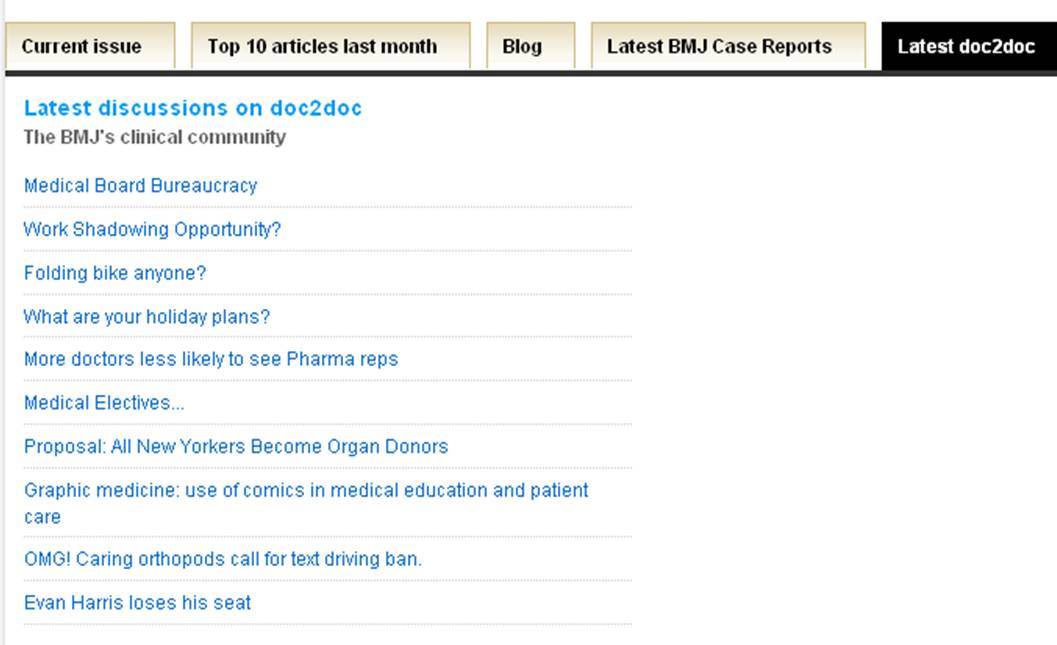Targeted content for doctors in training
25 Aug, 11 | by BMJ
Doctors in training are an important audience for the BMJ (they are our future readers) and our dedicated portal for junior doctors includes links to the latest articles, learning modules, case reports and forum discussions from doc2doc, BMJ Group’s clinical community.
The site is an unusual one in that it allows the end user to customise which content they see by opening a porfolio of “widgets” showing on the right hand side. These content widgets include the latest research articles from the BMJ and more than 30 specialist journals, and are selected each week by a junior doctor colleague.

There are also a series of widgets showing the latest educational content from across the Group. These include free modules from BMJ Learning, postgraduate exam questions from OnExamination, and one showing the latest Endgames (a BMJ interactive quiz section aimed at doctors in training). Endgames launched three years ago and typically includes anatomy and picture quizzes, statistical question, and a case report.There is also a widget showing latest case reports from the Group’s online Case Reports journal. more…

